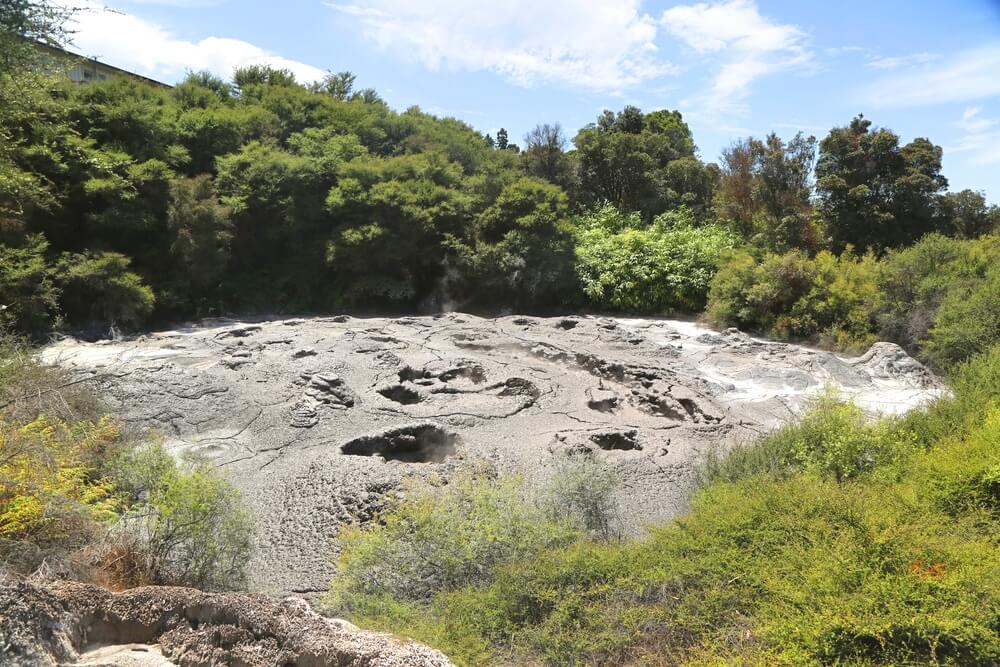Whakarewarewa Geothermal Valley
Warning: Undefined variable $slug in /home/lakepedia/includes/subpage_functions.php on line 293
The Whakarewarewa Geothermal Valley is a semi-rural area which was the site of Te Puia, the M?ori fortress first occupied around 1325, known as an impenetrable stronghold which was never taken in battle. M?ori have been living here ever since, taking advantage of the geothermal energy in their daily activities, from cooking in the bubbling waters, to heating their homes and bathing in the therapeutic waters.
A Geothermal Hotspot
The natural geothermal features in the valley are the result of the geothermal activity in the larger area known as the Rotorua Thermal Field, which covers an area of 12 square kilometres, but extends much further below the ground.
Whakarewarewa has around 500 pools and 65 geysers, set among the colourful sinter terraces that make up Whakarewarewa Thermal Valley. Most of the pools are alkaline chloride hot springs, and 7 out of the 65 geysers are active, most famous of them being Pohutu Geyser, which erupts approximately once per hour to heights of 30 metres (98 feet). Other features here include near-boiling alkaline waters, acidic liquids that flow into warm muddy pools, areas of steaming ground, and steam and gas flows.
The mud pools in Whakarewarewa are usually acidic, and occur at raised elevation away from fault areas. They are created by acidic waters that dissolve surrounding rock, thus altering structures and producing pools of mud.
The thermal features at Whakarewarewa have been affected by domestic and commercial activities in Rotorua, as the geothermal fluids were extracted for heating through shallow wells, which ranged from 20 to 200 metres in depth. Consequently, a bore closure programme was initiated in 1987-1988, which resulted in 226 wells being cemented shut. Ever since then, the hot springs and geysers at Whakarewarewa have started to recover dramatically.
The geysers that are currently active are aligned on a common fissure on Geyser Flat, forming a very complex system in which the activity of a geyser affects another.

Experience a Traditional Maori Village
Located in a breathtaking landscape of erupting geothermal activity, the Living Maori Termal Village of Whakarewarewa will amaze you.
Whakarewarewa Thermal Village is one of the most popular attractions in Rotorua, featuring a living village among hot springs and mud pools. Located three kilometres south of Rotorua City in a stunning landscape of erupting geothermal activity, the Living Maori Village is a wonderland of Maori Culture and traditions, where you will be able to taste food cooked in thermal waters.
Whakawerawera village is a place of great spiritual significance and natural wonder. You can join a guided tour to experience the Maori culture and find out how people live in harmony with the unique environment here. You will also be able to witness Maori cultural performances, that will entertain you through songs and dance.
You will also have to try the Traditional Geothermal Hangi, Corn Cob, or Hangi Pie while you are here. You can also interact with the local artists and learn how to make your own Harakeke with the professional weaver, or go to a private session with the residential Maori tattoo artist.
The clear hot pools in the village have temperatures ranging between 70 and 100 degrees Celsius. Formed by the primary geothermal reservoir that rises to the surface through faults, their PH is neutral or alkaline, and their waters are saturated with natural silica.